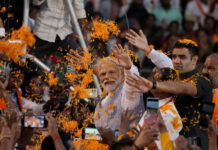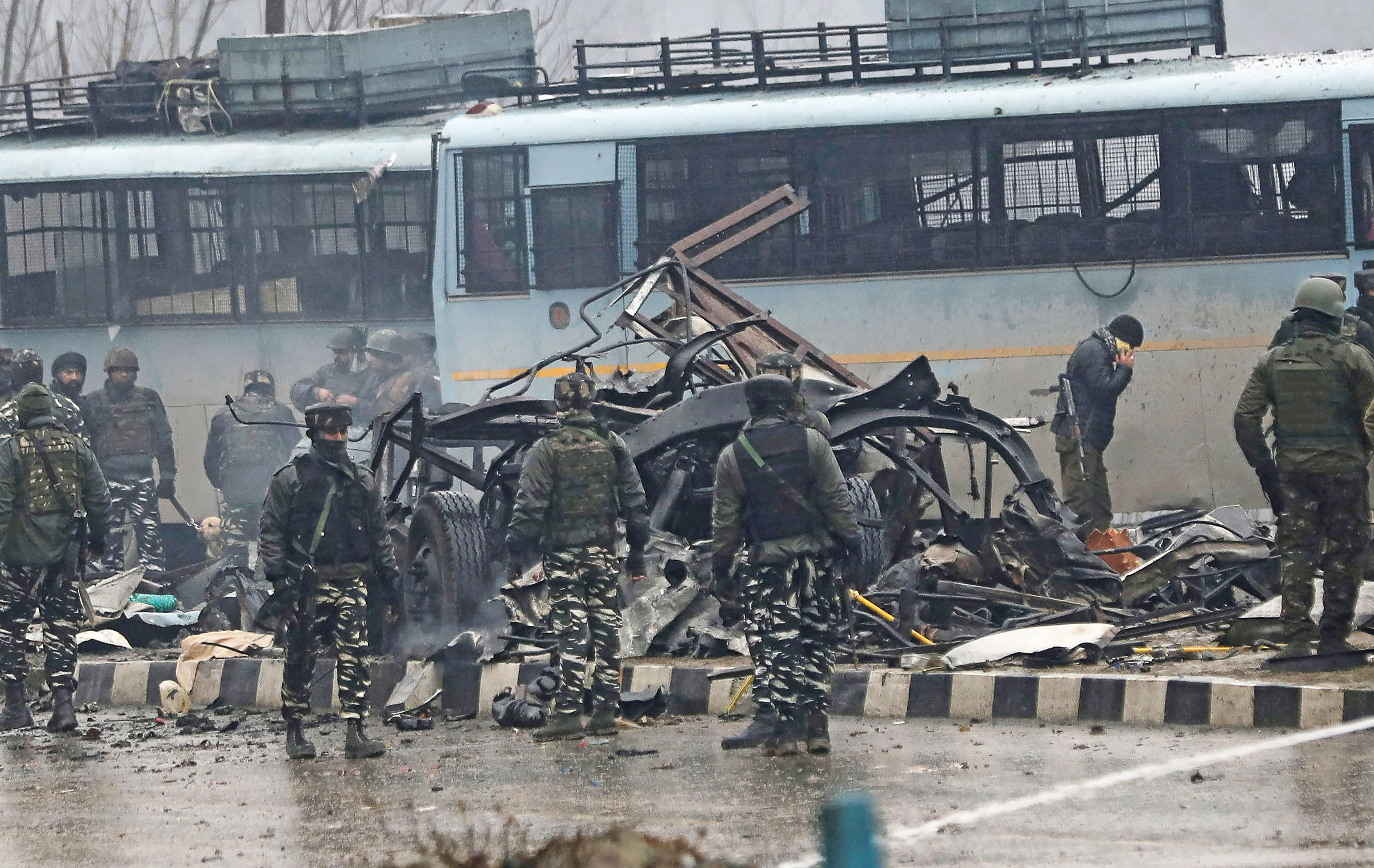Muhammad Sharreh Qazi
“Dreams of ‘disarming first strikes’ leading to the temptation to ‘go first’ and the consequent instability of Small Nuclear Power equations are think-tank myths”
Gen K. Sunderji, “India’s Nuclear Weapons Policy
From Brasstacks to Sindhu Sudarshan, Indian conventional warfighting doctrine has remained unchanged: unhinged air-land coordination hoping for rapid mobilization. With post-Balakot conundrum still haunting India’s air ‘superiority’ fantasy and its failure to establish rapid dominance during conflict, Indian war machine resets its clocks to how it needs to mobilize, deploy and coordinate. Strategic shock aside, India’s inability to prioritize areas of influence allow Pakistan a significant advantage to synchronize its forces against any possible instance of aggression. With Indian conventional forces aiming at presenting themselves as a ‘precursor’ to any preemptive strike, its lack of a unified mobilization doctrine presents the same problems over and over again. Operation Brasstacks, Sunderji Doctrine and the Cold Start Doctrine all have one pronounced dilemma: technological inferiority coupled with indecision. With Rafael aircraft augmenting Indian airforce, aircraft carriers operating as floating airbases and strike corps cooperating with allied forces, India hopes that it would be able to achieve its desired end. To bring this amalgam to fruition, however, is another matter entirely. Pakistan’s more aggressive missile development and conflict maneuvering deprives India the element of preemption, one of the core principles of rapid mobilization of conventional forces.
For the Indian armed forces there is a distinguished lack of strategic factors in utilizing conventional force asymmetry to its advantage. On one end, India is aiming to enhance its naval footprint but on the very next it is required to acquire air superiority through high-end hardware but in that same breath, its ground forces are questionably equipped. One question that would continue to haunt Indian strategists would be ‘which pillar of the armed forces would be used to preempt when technological inferiority is counteracted by lack of expertise?’ India’s signal to revise its No First Use policy may also be perceived as a time gaining strategy to revisit its conventional doctrine. With India hoping to ‘dissuade’ Pakistan via its NFU reexamination, the desire is to buy time for it to prepare a comprehensive joint action plan. Out comes Balakot and Indian air-force displaying an isolated ‘mission’ devoid of any unison to devastating consequences. Did Indian airforce display enough capacity, capability and credibility to deliver what it hopes to be an umbrella for ground mobilization? In such an eventuality, would India’s holding corps be technologically and strategically agile enough to ‘seize the moment’? To quote Edward Aloysius Murphy Jr. ‘Anything that can go wrong, will go wrong’.
Conventional mobilization, be it Sunderji or Cold Start or Sindhu Sudarshan, requires precision coordination. It is an effort to synchronize independent doctrines to form one interconnected warfighting dogma, one that has to be precise to the point of perfection. India’s conventional military mobilization requires Indian navy to initiate blockades, the air force to provide operational comfort and ground forces to penetrate in as less time as possible. In this regard, India’s Tiger Triumph Exercises and Sindhu Sudarshan Maneuvering serve the right kind of concoction but for Indian air force to complement this dyad of operational maneuverability is not possible ever since it was unable to ‘strike and hold’. To add to this hiatus, Pakistan’s nuclear thresholds create further doctrinal confusions where Indian forces and political pundits are unable to choose whether to employ conventional surprise or to maintain a nuclear deterrent. For Sunderji and his military code, Tactical Weapons were both counterproductive and obstructing hardware to be doctrinally kept operational. How would India then, while aiming at nuclear triads and Ballistic Missile Defense shields, maintain conventional mobilization as an operational dimension to its regional military projection?
New Delhi, ideologically and more robustly nowadays, wants a change of perceptions. It is on one end, trying to enter the ‘big leagues’ and on the other, vying to achieve superiority against its own regional contenders. Between this, India’s Uri and Balakot narrative is unable to set any pace for its momentum due to incidents and instances that devastate their strategic roadmap. With New Delhi divided on nationalism, territorial redefinition and Kashmir, air force displaying questionable control over air warfare, nuclear doctrine hanging in limbo and strike corps still taking considerable time in mobilizing effectively, what remains is Sunderji’s nightmare. Narendra Modi’s ‘war cry’ is an echo from his predecessors, many of them who used it only for domestic political alignments. To actually execute a plan to ‘defeat Pakistan in 10- 12 days’ one needs confidence from one’s own armed forces; something which seems to be fleeting at the moment. Between Narvane’s newfound enthusiasm and Bipin Rawat’s persistence as Chief of Defense Staff, Indian ground forces would be at a strategic disadvantage of being sandwiched between two doctrines.
With Sunderji’s India thinking on exactly the same as feared, Pakistan counter-maneuvering exactly as dreaded and Indian ground forces losing momentum time and again, Sunderji demotes to a more ‘syndrome’ level, acting as a speedbump to a more robust nuclear deterrent. What kind of wars could one expect in such confusion? One riddled with tactical errors leading to strategic consequences if not curtailed. For Sunderji and his military dogma, Pakistan armed forces serve a better platform with their numerical inferiority compensated by intensely rapid response vis-à-vis Operation Swift Retort. In a more vibrant onset, India’s policy confusion between conventional and/or nuclear preference against Pakistan is exactly what devastates conventional military mobilization. If decision makers in New Delhi remain deadlocked at choosing either stratagem, any attempt to proactively deploy a mobilization doctrine would prove futile. India’s current trajectory makes military mobilization a means to an end where for their military, achieving Sunderji’s ‘dream’ is an end in itself. India, trying to climb its end of Kahn’s Ladder of Escalation, has created an escalator of conventional doctrines, one that is out of order for the moment. Principally, deviating their attention to a multitude of avenues means that their ‘experiments’ on testing Pakistan’s security integrity would be interrupted and perforated, providing Pakistan an opportunity to respond to them individually instead of facing a synchronized collective. For Chanakya, failure of Sunderji Doctrine and its more modernized offshoots is evidence enough that perhaps it has to be abandoned in favor of a new policy framework. India’s insistence on maintaining conventional aggression and nuclear restraint puts its own security structure into jeopardy. Confusion in India’s military matrix not only devastates any attempt to achieve joint operations but also enforces stopgaps and recesses that dissuade strategic momentum.
India’s inability or indecision to escalate beyond Balakot without their nuclear
quotation, allowing Pakistan to dictate the real-time dimensions of conventional force posturing, sudden reconsiderations to its doctrinal factum and persistence to prioritize mobilization over renovating its forces is what prevents Sunderji’s invention to come to execution. India’s conventional military mobilization doctrine is riddled with sub-doctrines and subsets of independent, often disconnected, understanding of both the enemy and desired targets. To achieve synchronization, India needs to compound its desired objectives before it tests its mobility and even prior to such a discourse, it needs to settle on what doctrine to pursue. The idea that conventional forces serve as auxiliaries to nuclear deterrent or the approach that both operate in their own independent spheres is what needs prioritization. Sunderji’s army was one without exceptional nuclear capabilities and that has not yet been established at New Delhi that still allows things to go beyond Cold Start. For Pakistan, India’s strategic ‘broth’ is already spoiled by too many ‘doctrinal cooks’.
Military realities are different in simulations from their real-time manifestations. Rapid
mobilization, shock and awe, blitzkrieg have all been practiced and modified but at the cost of very high human casualties. Pakistan, contrary to what is usually perceived, has shown patience and tolerance all the while offering a calculated response but for India under Modi, another venture to exact Sunderji Doctrine would be devastating. Tactical level mistakes often end up creating strategic level consequences, often those that are irreversible. To quote General George S. Patton, “the officer who doesn’t know his communications and supply as well as his tactics is totally useless.”
Where does all this leave Pakistan? Between Chanakya and Sunderji, Pakistan would have to act as a stabilizer or an equalizer against any future Indian aggression. Indian military hierarchy is developing what can be termed as a ‘doctrinal cul-de-sac’. Indian policymakers are entering a particular phase where, by engineering a humanitarian dilemma in Kashmir, it intends to provoke Pakistan into preemption/intervention which can neutralize its post-Uri posture. For Sunderji, his Operation Digvijay and its catastrophic consequences at Operation Blue Star, his Operation Brasstacks and its fractures in Kargil, have collectively manifested throughout Indian military mobilization. Perhaps, to quote something from history one might resonate what Sunderji himself manifested:
“I deliberately set my sights very high and it was unrealistic to imagine I could achieve what I set out to do.”
Operation Swift Retort may be Pakistan’s venture but it reminds Indian armed forces exactly what Sunderji meant when he highlighted himself ‘thinking unrealistically’. Strategic fractures in Sunderji doctrine owe a lot to how India perceives its military tactics. Operation Bandar, signifying India’s Ramayana influenced Hanuman-like strike went haywire without escalating, Brasstacks went unanswered and India’s surgical strikes went unnoticed, all the while positing that it is Pakistan that is the stabilizer and India which is the aggressor. Realities, beyond exercises and trainings, are still the same but evolving. For Pakistan, a quid pro quo is neither maintainable nor strategically desirable. A more enhanced factum is that rapid mobilization is an ipse dixit that would only increase regional instability. A frenzied political rhetoric by Indian Prime Minister might not upset Islamabad but it would surely intrude the Indian General Headquarters. Pakistan might have increased its thresholds of tolerance for Eastern ‘adventures’ but all of them have been satisfactorily dealt with without escalating. Despite being strategically underprivileged, Pakistan has resorted to strategic restraint whereas India, in Modi’s newfound gusto towards highly agile and mobile armed forces, has opted to act impulsively.
Where do we go from here? What does it hold for Pakistan as a regional stabilizer/ equalizer? Has Pakistan’s approach to regional stability evolved to accommodate Indian recklessness? There are more questions than answers at this stage. But one can take comfort from what Lt. Gen. Khalid Kidwai (Retd) said recently:
“Pakistan’s stated policy is quid pro quo plus which amplifies very clearly that we will not take it lying down, and we will get right back, plus a bit.”
Muhammad Sharreh Qazi is a Lecturer at the School of Integrated Social Sciences, University of Lahore.

















